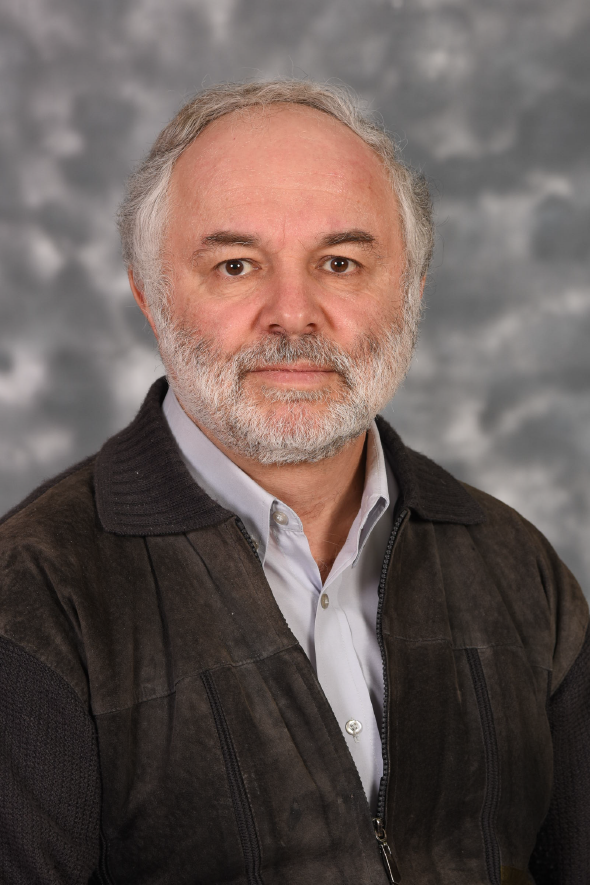Multidimensional Solitons

While most experimental realizations and theoretical models of solitons have been elaborated in one-dimensional (1D) settings, a challenging issue is prediction of stable solitons in 2D and 3D media. In particular, multidimensional solitons may carry an intrinsic topological structure in the form of vorticity. In addition to the "simple" vortex solitons, fascinating objects featuring complex structures, such as hopfions, i.e., vortex rings with internal twist, have been predicted too.
A fundamental problem is the propensity of multidimensional solitons to be unstable (naturally, solitons with a more sophisticated structure, such as vortex solitons, are more vulnerable to instabilities). Recently, novel perspectives for the creation of stable 2D and 3D solitons were brought to the attention of researchers inoptics and BEC. The present talk aims to provide an overview of the main results and ongoing developments in this vast field. An essential conclusion is the benefit offered by the exchange of concepts between different areas, such as optics, BEC, and hydrodynamics.
Recent review articles and a book on the subject of the talk:
Y. Kartashov, G. Astrakharchik, B. Malomed, and L. Torner,
Frontiers in multidimensional self-trapping of nonlinear fields and matter,
Nature Reviews Physics 1, 185-197 (2019)
https://doi.org/10.1038/
B. A. Malomed, (INVITED) Vortex solitons: Old results and new perspectives,
Physica D 399, 108-137 (2019)
https://doi.org/10.1016/j.
free access: https://authors.elsevier.com/
Z. Luo, W. Pang, B. Liu, Y. Li, and B. A. Malomed, A new form of liquid matter:
quantum droplets, Front. Phys. 16, 32501 (2021)
https://link.springer.com/
B. A. Malomed, Multidimensional dissipative solitons and solitary vortices,
Chaos, Solitons & Fractals 163, 112526 (2022)
https://doi.org/10.1016/j.
B. A. Malomed, Multidimensional Soliton Systems, Advances in Physics X 9:1,
2301592 (2024).
G. Li, Z. Zhao, B. Liu, Y. Li, Y. V. Kartashov, and B. A. Malomed, Can vortex
quantum droplets be realized experimentally? Frontiers of Phys. 20, 013401 (2025).
B. A. Malomed, Prediction and observation of topological modes in fractal nonlinear
optics, Light: Science & Applications 14, 29 (2025).
B. A. Malomed, Multidimensional solitons (a book), AIP (American Institute of Physics)
Publishing, Melville, NY, 2022.
Date and Time
Location
Hosts
Registration
-
 Add Event to Calendar
Add Event to Calendar
- Contact Event Hosts
-
Contact: nicolas.quesada@polymtl.ca
- Co-sponsored by Prof. Nicolas Quesada
Speakers
Boris of Tel Aviv University
Multidimensional Solitons

While most experimental realizations and theoretical models of solitons have been elaborated in one-dimensional (1D) settings, a challenging issue is prediction of stable solitons in 2D and 3D media. In particular, multidimensional solitons may carry an intrinsic topological structure in the form of vorticity. In addition to the "simple" vortex solitons, fascinating objects featuring complex structures, such as hopfions, i.e., vortex rings with internal twist, have been predicted too.
A fundamental problem is the propensity of multidimensional solitons to be unstable (naturally, solitons with a more sophisticated structure, such as vortex solitons, are more vulnerable to instabilities). Recently, novel perspectives for the creation of stable 2D and 3D solitons were brought to the attention of researchers inoptics and BEC. The present talk aims to provide an overview of the main results and ongoing developments in this vast field. An essential conclusion is the benefit offered by the exchange of concepts between different areas, such as optics, BEC, and hydrodynamics.
Recent review articles and a book on the subject of the talk:
Y. Kartashov, G. Astrakharchik, B. Malomed, and L. Torner,
Frontiers in multidimensional self-trapping of nonlinear fields and matter,
Nature Reviews Physics 1, 185-197 (2019)
https://doi.org/10.1038/
B. A. Malomed, (INVITED) Vortex solitons: Old results and new perspectives,
Physica D 399, 108-137 (2019)
https://doi.org/10.1016/j.
free access: https://authors.elsevier.com/
Z. Luo, W. Pang, B. Liu, Y. Li, and B. A. Malomed, A new form of liquid matter:
quantum droplets, Front. Phys. 16, 32501 (2021)
https://link.springer.com/
B. A. Malomed, Multidimensional dissipative solitons and solitary vortices,
Chaos, Solitons & Fractals 163, 112526 (2022)
https://doi.org/10.1016/j.
B. A. Malomed, Multidimensional Soliton Systems, Advances in Physics X 9:1,
2301592 (2024).
G. Li, Z. Zhao, B. Liu, Y. Li, Y. V. Kartashov, and B. A. Malomed, Can vortex
quantum droplets be realized experimentally? Frontiers of Phys. 20, 013401 (2025).
B. A. Malomed, Prediction and observation of topological modes in fractal nonlinear
optics, Light: Science & Applications 14, 29 (2025).
B. A. Malomed, Multidimensional solitons (a book), AIP (American Institute of Physics)
Publishing, Melville, NY, 2022.
Biography:
Bio: Boris Malomed was born in Minsk (Belarus). He had received MS in physics from the Belorussian State University (Minsk) in 1977, PhD in theoretical physics from the Moscow Institute of Physics and Technology in 1981, and the Doctor of Sciences degree (habilitation) in theoretical physics from the N. N. Bogoliubov Institute for Theoretical Physics, Ukrainian Academy of Sciences (Kiev) in 1989. Till 1991, He was a senior researcher at the Institute for Oceanology of the USSR Academy of Sciences (Moscow). Since 1991, He was an Associate Professor, and since 1998 a Full Professor at the Tel Aviv University. Since 2015, He is a holder of a personal research chair "Optical solitons" funded by the Tel Aviv University. He has published 1,200+ papers and four books. The total number of citations to my publications exceeds 56,800. His h-index is 90 (Web of Science) / 93 (Scopus)/ 108 (Google Scholar). I am an editor of three major international journals: Physics Letters A, Chaos, Solitons & Fractals, and Scientific Reports, and an Editorial Board member of Journal of Optics, Symmetry, Photonics, Optics Communications, Chaos, and PLOS ONE. He has been an advisor to 31 MS students, 14 PhD students, and 11 postdocs. He is a Senior Member of the Optical Society of America (recently renamed to Optica), and a Foreign Member of the Serbian Academy of Nonlinear Sciences. In 2025, He has received the NSC (Nonlinear Science & Complexity) Lagrange award for lifetime achievement in Nonlinear Physical Science.

